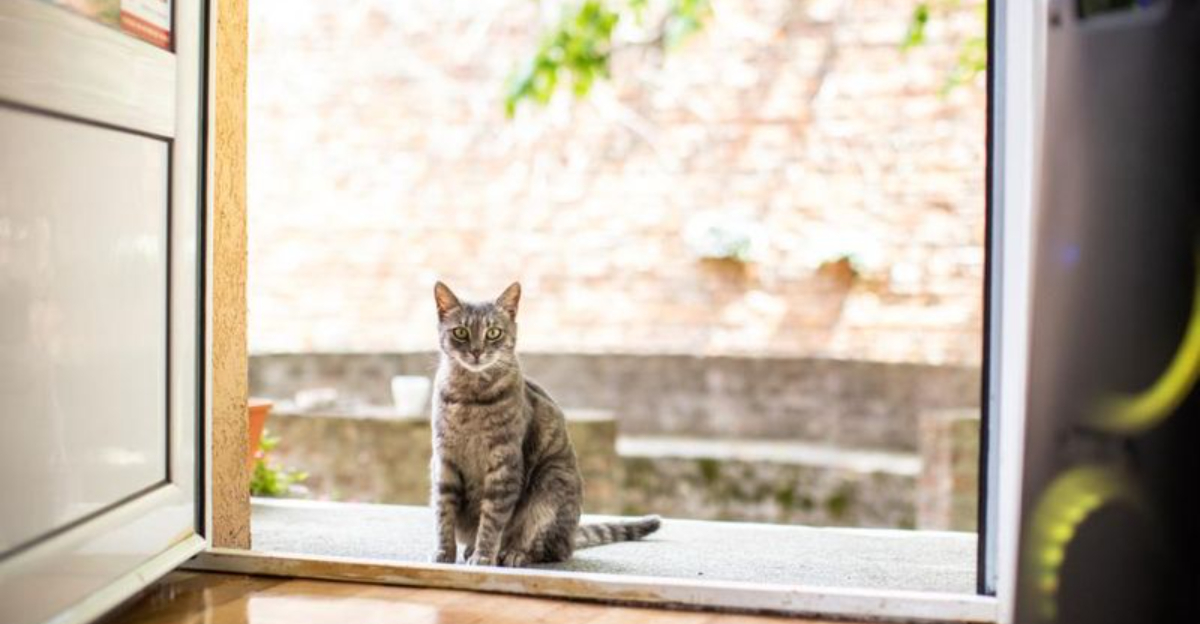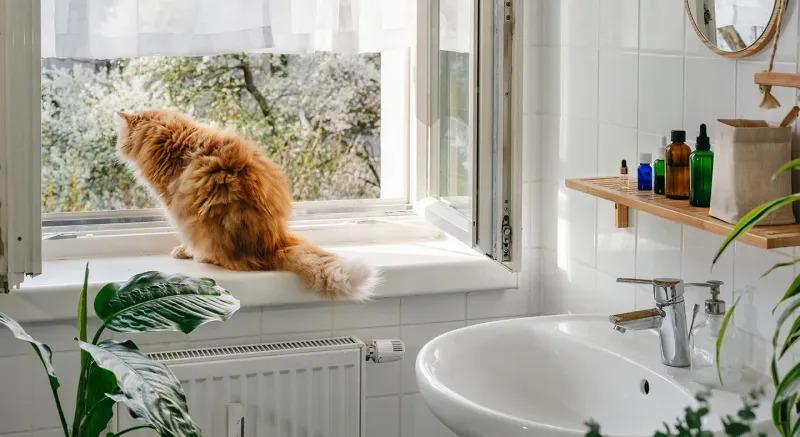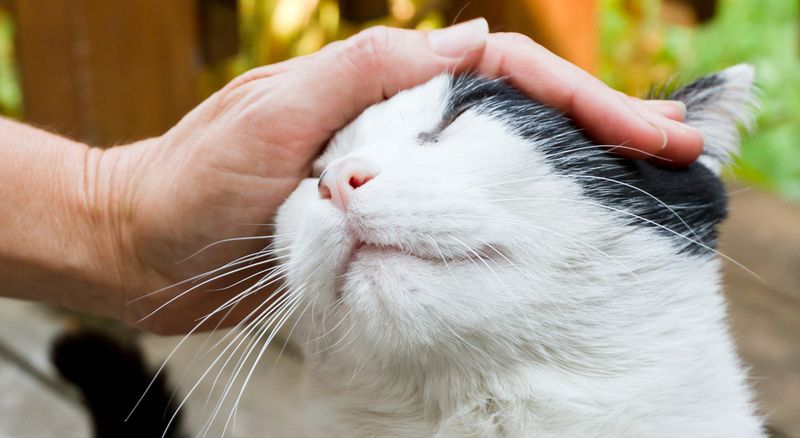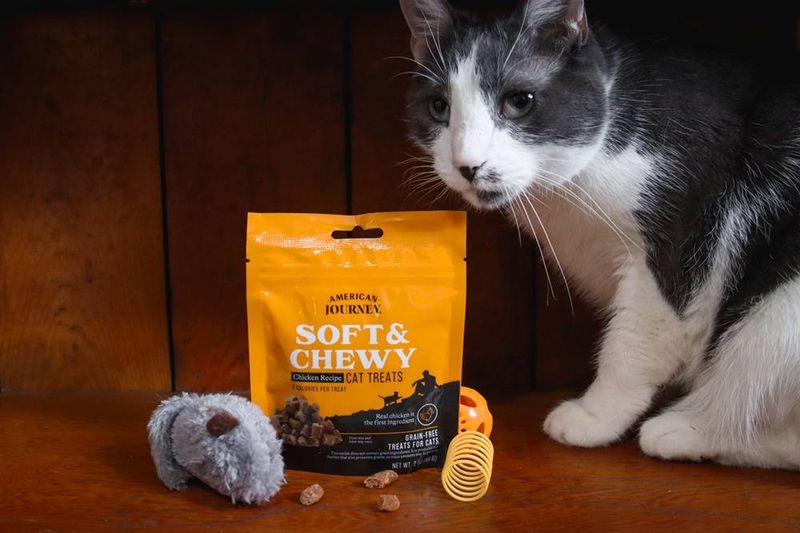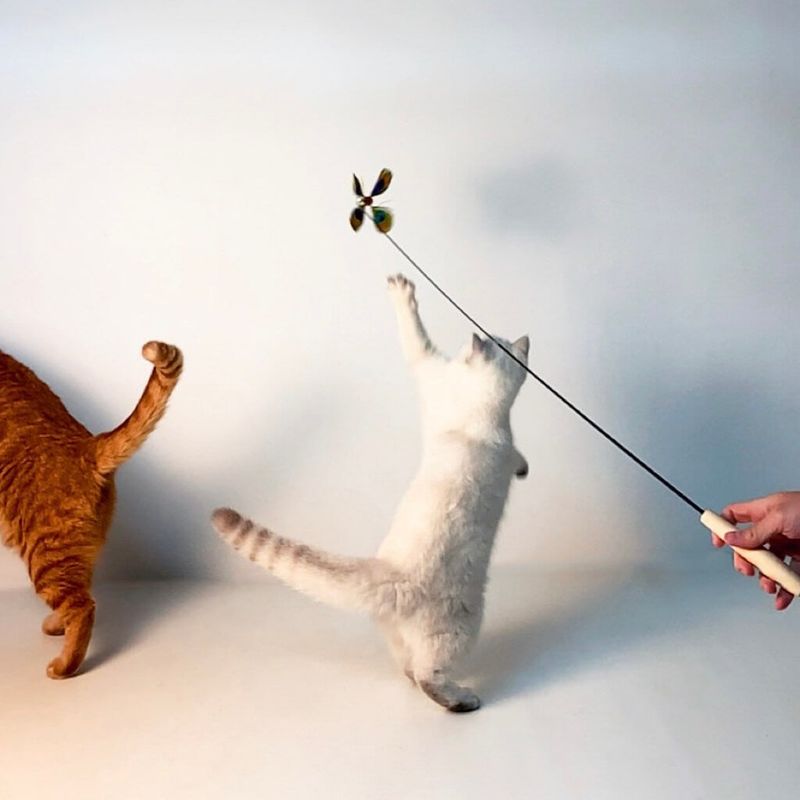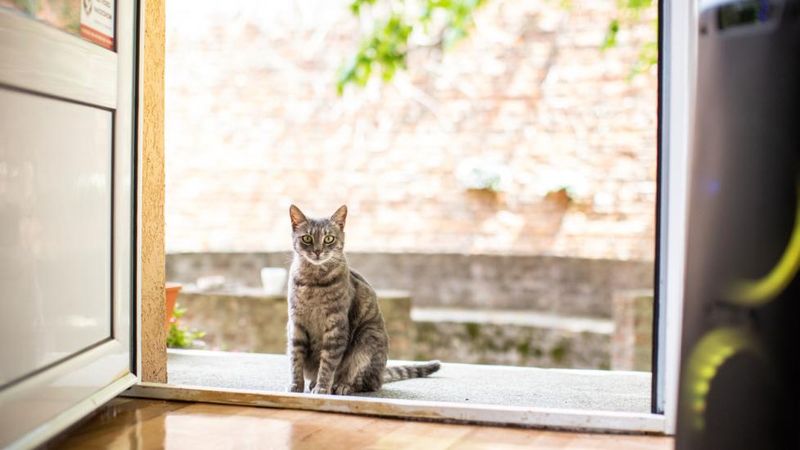📖 Table of Content:
- 1. Start with a Safe, Quiet Space
- 2. Use Feliway or Calming Pheromones
- 3. Offer High-Value Food
- 4. Allow Them to Hide
- 5. Keep Human Interaction Minimal at First
- 6. Use Interactive Play
- 7. Keep a Consistent Routine
- 8. Speak Calmly and Move Slowly
- 9. Use Covered or Top-Entry Litter Boxes
- 10. Gradually Expand Their Territory
- 11. Be Patient and Respect Their Pace
Bringing a feral cat indoors is one of the most compassionate acts an animal lover can undertake, but it also comes with unique challenges. These cats are often deeply mistrustful of humans due to their life experiences outdoors, where survival often depends on keeping distance from potential threats—including people. Yet, with time, understanding, and the right approach, even the most cautious feral cat can learn that an indoor home offers not danger, but safety and comfort.
Transitioning a feral cat into a home environment requires more than just physical relocation; it demands a shift in mindset, trust-building, and sensitivity to feline behavior. Unlike domesticated cats, ferals operate on survival instincts that must be gently eased rather than forcibly overridden. It’s not about “taming” them in the traditional sense—it’s about helping them rediscover security in a new context.
The good news is that, by employing thoughtful techniques and practicing patience, you can help a feral cat adapt successfully. Each cat moves at their own pace, but there are tried-and-true methods to make the transition smoother and less stressful. The following tips are designed to ease the process, encourage bonding, and ensure the cat feels safe, understood, and respected in their new home.
1. Start with a Safe, Quiet Space
Creating a calm, enclosed room gives a feral cat a much-needed sanctuary from overwhelming sights and sounds. Place essentials like a litter box, food, water, and cozy hiding spots to make it feel secure. Avoid high-traffic areas of the house, especially during the early days. Let the cat adjust to the new smells and sounds of your home at their own pace. You might find that a bathroom, laundry room, or small spare bedroom works best. This limited territory helps reduce stress and the feeling of vulnerability. Over time, the cat will associate this space with safety and routine.
2. Use Feliway or Calming Pheromones
Introducing synthetic feline pheromones can significantly soothe a stressed or fearful cat. Feliway diffusers work by mimicking the scent cats use to mark safe, comforting spaces. Unlike medications, pheromones are non-invasive and completely safe for long-term use. Position diffusers at cat height, ideally near resting or feeding areas. Many cat guardians notice visible behavioral changes within just a few days of use. You won’t smell anything yourself, but your cat will pick up on the calming cues. Combined with a stable environment, this trick can make early bonding far easier.
3. Offer High-Value Food
Tempting treats are your best friend when building trust with a feral cat. Choose strong-smelling, protein-rich foods like tuna, sardines, or rotisserie chicken to spark interest. Hold out small bites on a spoon or flat dish at a distance first. As comfort grows, gradually reduce the space between you and the food. Many cats begin to associate your presence with good things through this method. Eventually, they may approach voluntarily when they sense feeding time. Keep sessions short and sweet to leave a positive impression.
4. Allow Them to Hide
Hiding is a fundamental coping mechanism for feral cats, not a sign of rejection. Respect their need to observe you from a distance until they feel secure. Provide covered beds, cardboard boxes, or even blankets draped over furniture for refuge. Avoid trying to coax them out before they’re ready—it can damage the trust you’re working to build. Over time, hiding becomes less frequent as the cat begins to explore on its own. Observing you from their hiding spot helps them learn your movements and tone without threat. Eventually, hiding shifts from fear-based behavior to optional comfort.
5. Keep Human Interaction Minimal at First
Limiting interaction early on actually fosters more trust over time. Instead of approaching or petting the cat, simply sit nearby and let them observe you. Activities like reading or working on a laptop show that you’re not a threat. Avoid making direct eye contact, which many cats perceive as aggressive. Let your body language be neutral and relaxed, with slow, predictable movements. When the cat begins to approach you, allow them to initiate contact. Respond gently and positively, reinforcing their choice to engage.
6. Use Interactive Play
Engaging a feral cat through play can bridge the gap between fear and familiarity. Wand toys, feathers, or string-based games create distance while still encouraging participation. Movement mimics prey, triggering natural hunting instincts in even the most reserved cats. Schedule short sessions at consistent times each day to build anticipation and routine. You don’t need physical contact—just attention and response. Over time, play becomes a bonding activity that both of you can enjoy. Eventually, you’ll notice body language changes that signal increased confidence and curiosity.
7. Keep a Consistent Routine
Predictability is incredibly comforting to cats, especially those new to indoor life. Feed them, clean their litter, and interact at roughly the same times every day. This helps establish trust and gives them control in a world that once felt chaotic. Sudden changes in schedule can be unsettling and set back progress. Stick to routines even on weekends or holidays when possible. The cat will begin to anticipate and relax into the rhythm of daily life. With consistency, trust grows naturally and steadily.
8. Speak Calmly and Move Slowly
Your voice and body language have more impact than you may realize. Speak softly and use a calm, melodic tone when addressing the cat. Abrupt or loud noises will likely send them into hiding. Approach with measured, gentle steps rather than quick movements. If you need to interact physically, like placing food or cleaning the litter box, announce your actions. Avoid reaching over them; crouch or sit instead to appear less threatening. Every interaction should reinforce the message: “You are safe here.”
9. Use Covered or Top-Entry Litter Boxes
Privacy matters more than you’d expect when it comes to litter habits. Enclosed litter boxes offer a safe space for a cat to do their business without fear of ambush. Some ferals may hold in waste if they feel too exposed, leading to health issues. Top-entry or covered models reduce smells and keep other pets or humans from startling them. Place the box in a quiet, low-traffic area to further minimize stress. Scoop frequently to keep the area clean and inviting. A well-chosen litter setup can prevent accidents and support the adjustment process.
10. Gradually Expand Their Territory
Once your cat feels secure in a small area, it’s time to explore further—slowly. Open access to adjacent rooms while maintaining the original safe zone. Let them retreat if they feel overwhelmed; don’t force exploration. Cats prefer to investigate new areas on their own terms. As they gain confidence, you’ll see them venture out more boldly and frequently. Be sure each new area has a few familiar items, like a blanket or toy, to reduce the novelty. This slow expansion helps build confidence while preventing setbacks.
11. Be Patient and Respect Their Pace
Every feral cat has a unique story and will progress differently. While some warm up in weeks, others may take months or even longer to fully trust. Your patience is not just appreciated—it’s essential. Celebrate small victories like eye contact, grooming in your presence, or tentative sniffing. Avoid setting expectations or comparing progress to other cats. With time, consistency, and love, even the most hesitant feline can learn to thrive indoors. Remember, you’re not just providing shelter—you’re giving them a second chance at a peaceful life.
